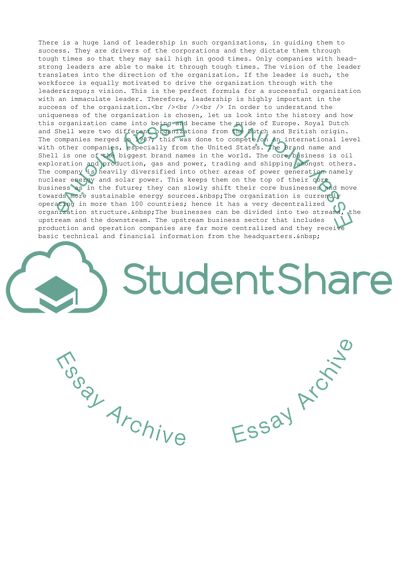Cite this document
(The Culture of the Organization - The Royal Dutch Shell Case Study - 6, n.d.)
The Culture of the Organization - The Royal Dutch Shell Case Study - 6. Retrieved from https://studentshare.org/management/1738273-organisational-behaviour
The Culture of the Organization - The Royal Dutch Shell Case Study - 6. Retrieved from https://studentshare.org/management/1738273-organisational-behaviour
(The Culture of the Organization - The Royal Dutch Shell Case Study - 6)
The Culture of the Organization - The Royal Dutch Shell Case Study - 6. https://studentshare.org/management/1738273-organisational-behaviour.
The Culture of the Organization - The Royal Dutch Shell Case Study - 6. https://studentshare.org/management/1738273-organisational-behaviour.
“The Culture of the Organization - The Royal Dutch Shell Case Study - 6”. https://studentshare.org/management/1738273-organisational-behaviour.


